The U.K. Royal Navy’s aircraft carrier HMS Queen Elizabeth has embarked the largest number of aircraft on its deck ever, as F-35B stealth fighters from British and American squadrons have gone aboard for the next phase of maneuvers. The Royal Navy, Royal Air Force, and U.S. Marine Corps have been working up to this for weeks now, as you can read about in this previous War Zone piece.
A total of 15 fighter jets from the Royal Air Force’s No 617 Squadron “Dambusters” and the U.S. Marines Corps’ Marine Fighter Attack Squadron (VMFA) 211, the “Wake Island Avengers,” are now on the carrier, together with eight Royal Navy Fleet Air Arm Merlin helicopters.
The jets began to arrive on the carrier yesterday, September 22, 2020, and the photos released today show 14 F-35Bs on the flight deck, ten from the U.S. Marines Corps, and four from the RAF. This suggests that one additional British aircraft is either yet to embark or was in the ship’s hangar deck when the pictures were taken.
The United Kingdom currently has 15 operational F-35Bs, in total, at RAF Marham. Another three are at Edwards Air Force Base in California for ongoing test and evaluation work, so there is the potential capacity to further expand the current fixed-wing air group.
Until now, the biggest F-35B air group we have seen was on the USS America last year as it sailed in the eastern Pacific. There were 13 F-35Bs on deck and possibly even more stowed away in the hangar deck. This reflected the U.S. Marine Corps’ “Lightning Carrier” concept, which could see amphibous assault ships carry between 16 and 20 F-35Bs in total, something you can read more about this concept in this past War Zone feature.
The U.S. Marines Corps declared that its F-35Bs had reached initial operational capability back in 2015 embarked them on an amphibious assault ship for the first time in 2018. That year, Marine F-35B went on to become the first American Joint Strike Fighters to conduct actual strikes, hitting targets in Afghanistan.


Having 15 jets from two different frontline squadrons on deck is a major achievement for HMS Queen Elizabeth and the U.K.’s Carrier Strike capability. This became dormant in November 2010, after that year’s Strategic Defence and Security Review (SDSR) axed the Royal Navy’s last fixed-wing aircraft carrier, HMS Ark Royal, together with all of its fixed-wing carrier-capable Harrier jump jets.
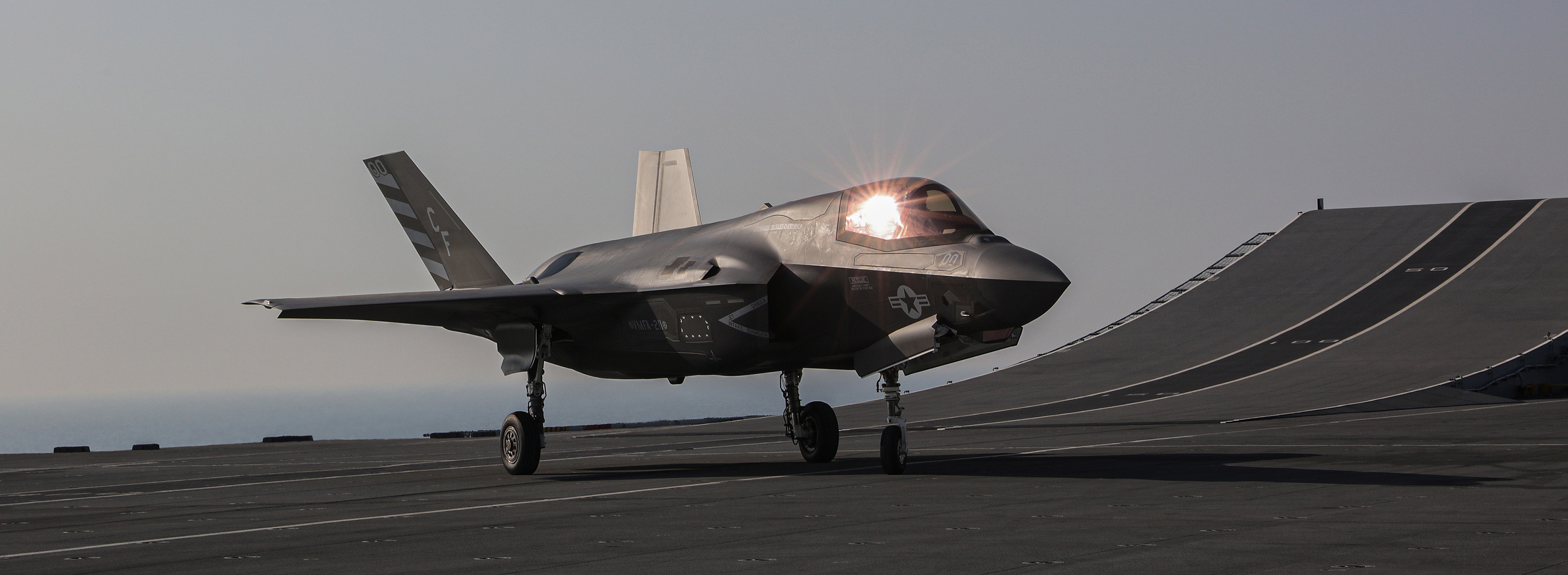
The lead vessel of a two-ship class, HMS Queen Elizabeth went to sea for the first time in June 2017 to begin trials off the coast of Scotland. The first aircraft to land on its deck was a Royal Navy Merlin HM2 helicopter, which touched down in July 2017. The first Lightning operations on the carrier took place off the US east coast in September 2018, involving F-35Bs from the Integrated Test Force (ITF) based at Naval Air Station Patuxent River, Maryland. The first British-owned jets began operating from the carrier in October 2019, again off the US east coast.
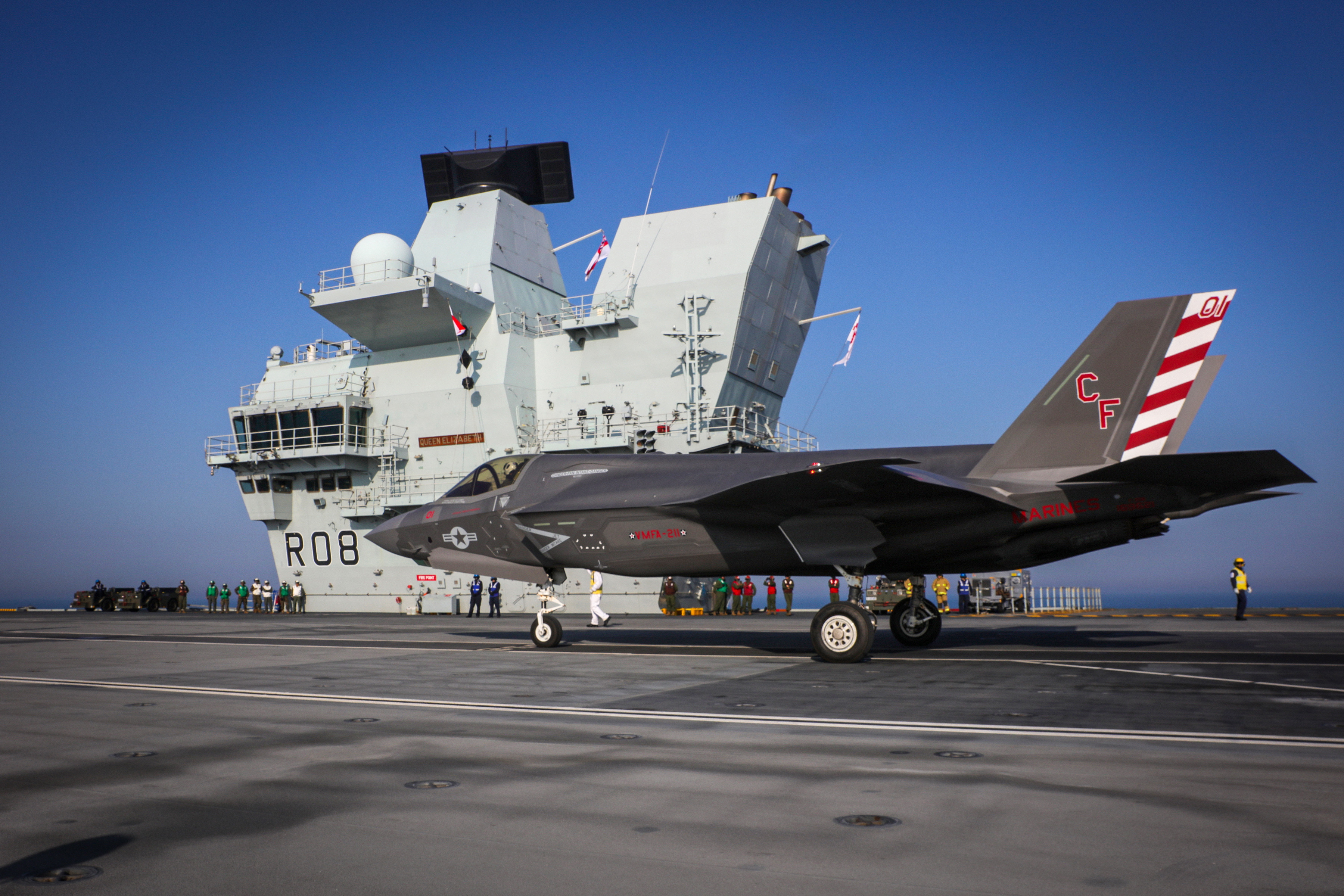
According to the U.K. Ministry of Defence, the air group currently embarked on HMS Queen Elizabeth includes the largest number of fighter jets to operate at sea from a Royal Navy carrier since HMS Hermes in 1983.
However, it seems that HMS Illustrious went to sea in September 2001 with eight Royal Navy Sea Harriers and eight RAF Harrier GR7s, for a total of 16 fast jets.
The 65,000-ton (displacement) aircraft HMS Queen Elizabeth departed its homeport of Her Majesty’s Naval Base (HMNB) Portsmouth on September 21, 2020, to begin exercises with allies in the North Sea, which will include the embarked F-35Bs. The maneuvers will include Joint Warrior, billed as NATO’s largest annual exercise, which is scheduled to take place off the northeast coast of Scotland from September 21 to October 15.

As part of a so-called Group Exercise, the carrier will operate alongside seven other Royal Navy warships — destroyers, frigates, and auxiliaries — plus other supporting units. This is part of the workup before HMS Queen Elizabeth forms the centerpiece of a U.K.-led NATO Carrier Strike Group that is scheduled to begin a first operational mission next year.
“This is an incredibly exciting time for 617 Squadron as we begin a new era of partnership with the US Marine Corps building towards next year’s operational deployment with HMS Queen Elizabeth,” said Commander Mark Sparrow, the commanding officer of the RAF’s No 617 Squadron. “You need to go back more than three decades to find the UK operating anything on this scale or complexity and this is a first for fifth-generation carrier capability; the era of big-deck, fast jet carrier operations is back.”
“The Wake Island Avengers are ready to work with the British sailors and aircrew on board HMS Queen Elizabeth, said Lt Col Joseph Freshour, commanding officer of VMFA-211. “We are looking forward to deploying alongside our British counterparts over the next few months, and we will work tirelessly as a part of this transatlantic naval force. We are proud to play such an important role in the generation of an ally’s Carrier Strike capability.”
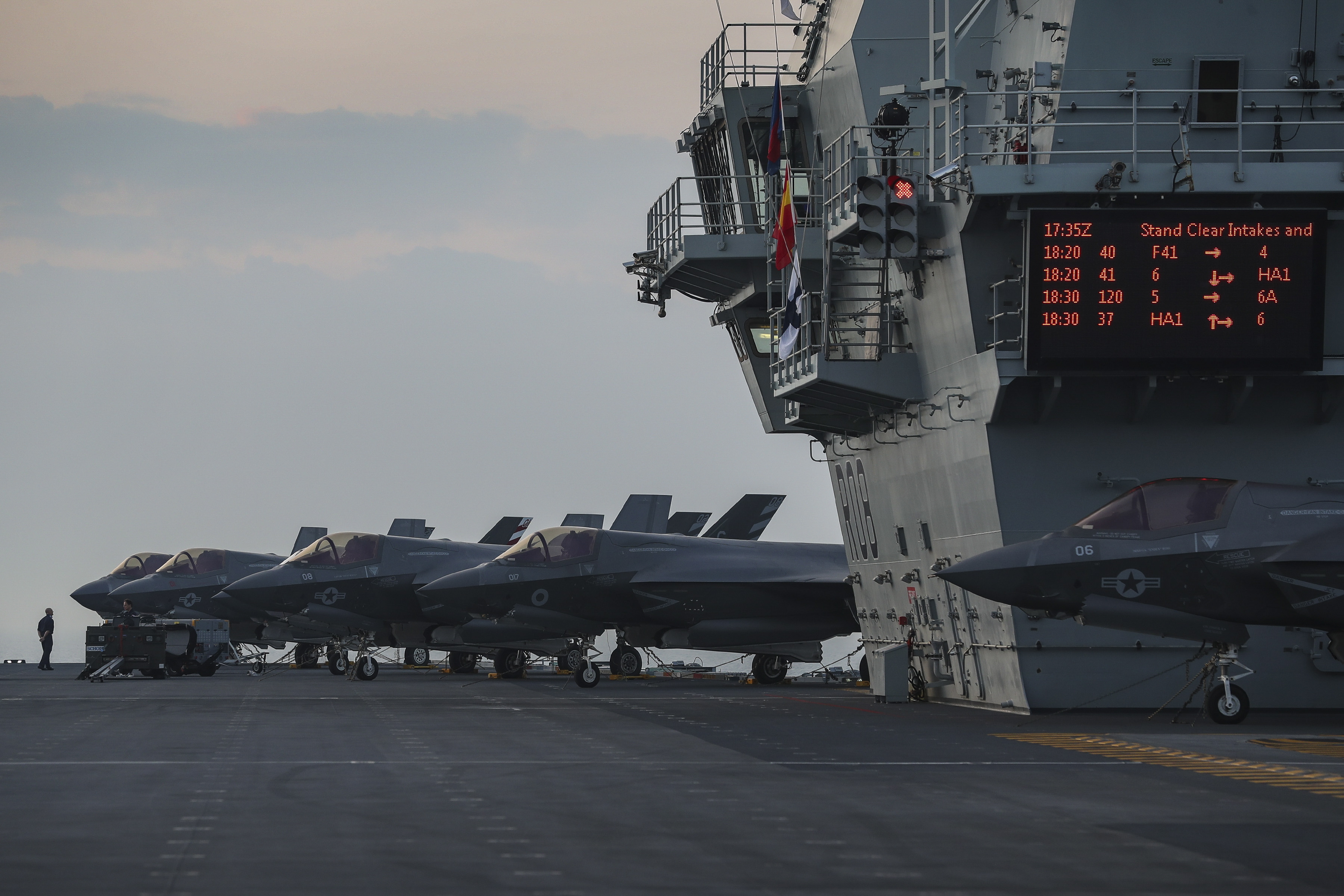
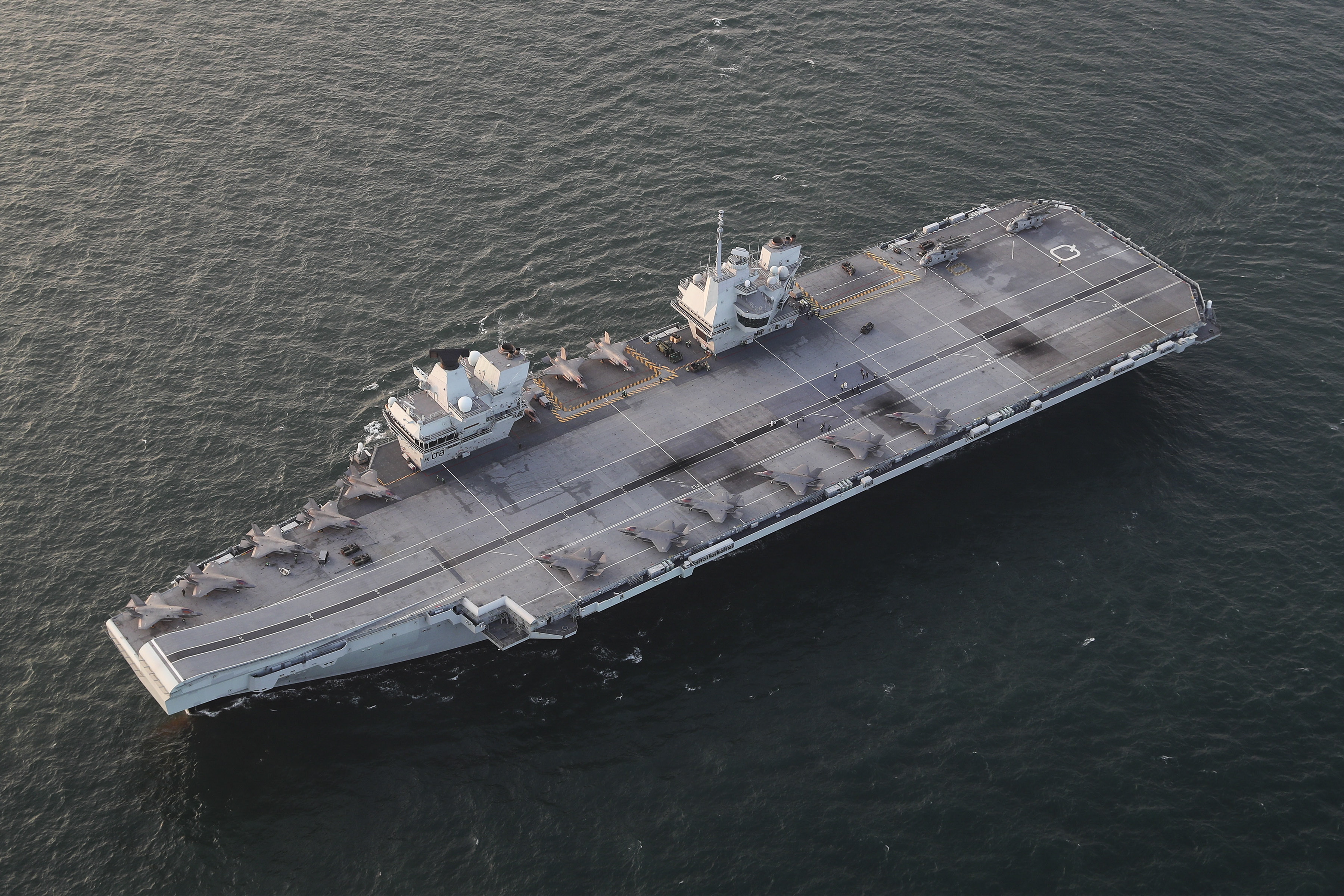
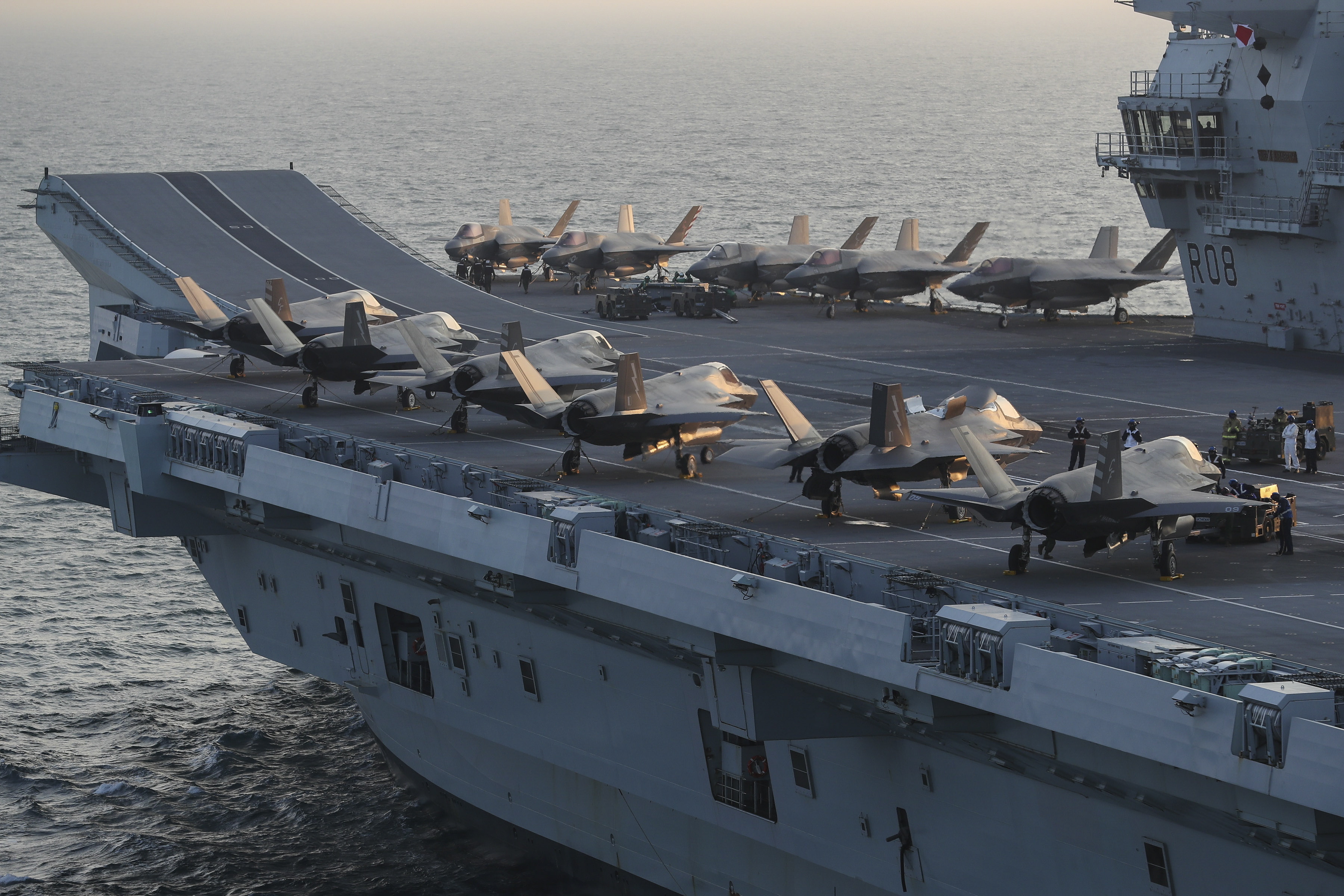
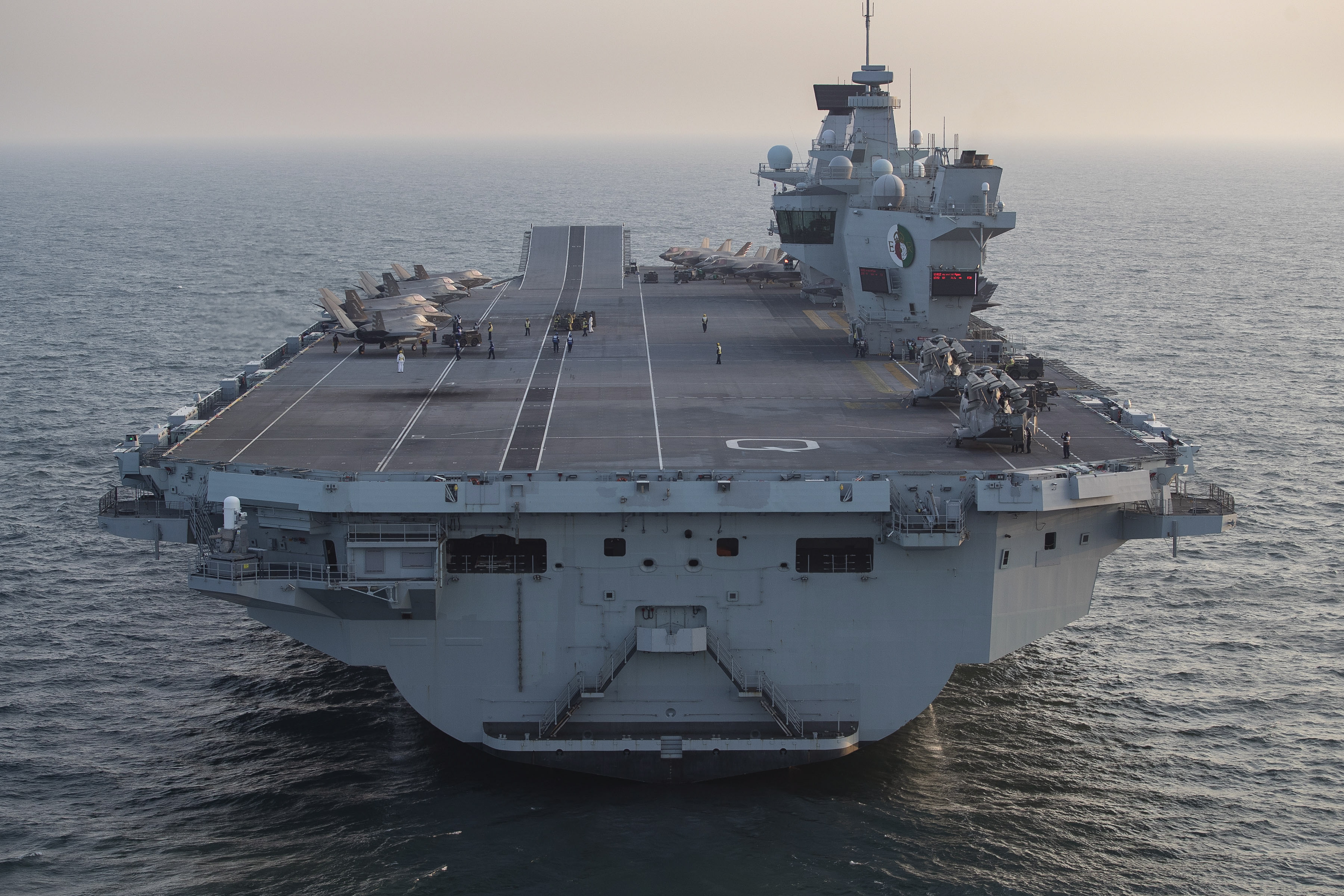

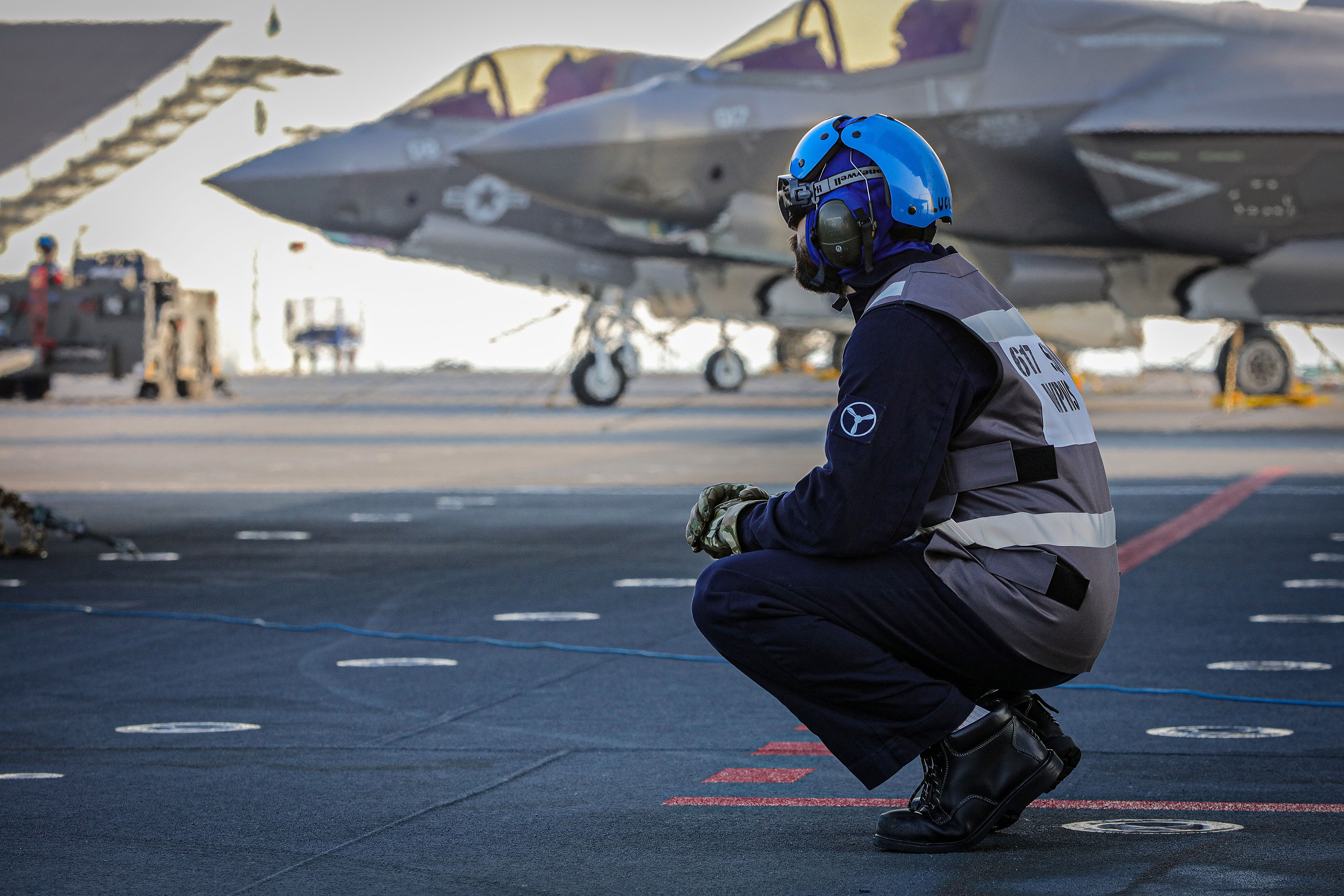
Commodore Steve Moorhouse, Commander UK Carrier Strike Group, said: “The United Kingdom’s maritime renaissance has been unfolding over many years, as we introduced a new generation of ships, submarines and aircraft into service. But this marks the first time we have brought them together in a cohesive, potent, fighting force.
“HMS Queen Elizabeth will be operating with the largest air group of fifth-generation fighters assembled anywhere in the world. Led by the Royal Navy, and backed by our closest allies, this new Carrier Strike Group puts real muscle back into NATO and sends a clear signal that the United Kingdom takes its global role seriously.”

Captain James Blackmore, the UK’s Carrier Air Wing Commander, added: “We are going to learn a huge amount from operating F-35Bs at sea with the USMC, they have had them longer and we can share ideas and practices. But this is much more than that; this is the trans-Atlantic alliance in action, demonstrating that two close allies can not only fly from each other’s carriers, but can fight alongside each other should we need to. This level of integration offers a decisive flexibility in times of crisis, conflict or war.”
HMS Queen Elizabeth is expected to return to Portsmouth in late October. By embarking these two squadrons of F-35Bs, plus supporting helicopters, the U.K. has already made another important step towards reinstating its Carrier Strike Group capability.
Contact the author: thomas@thedrive.com
